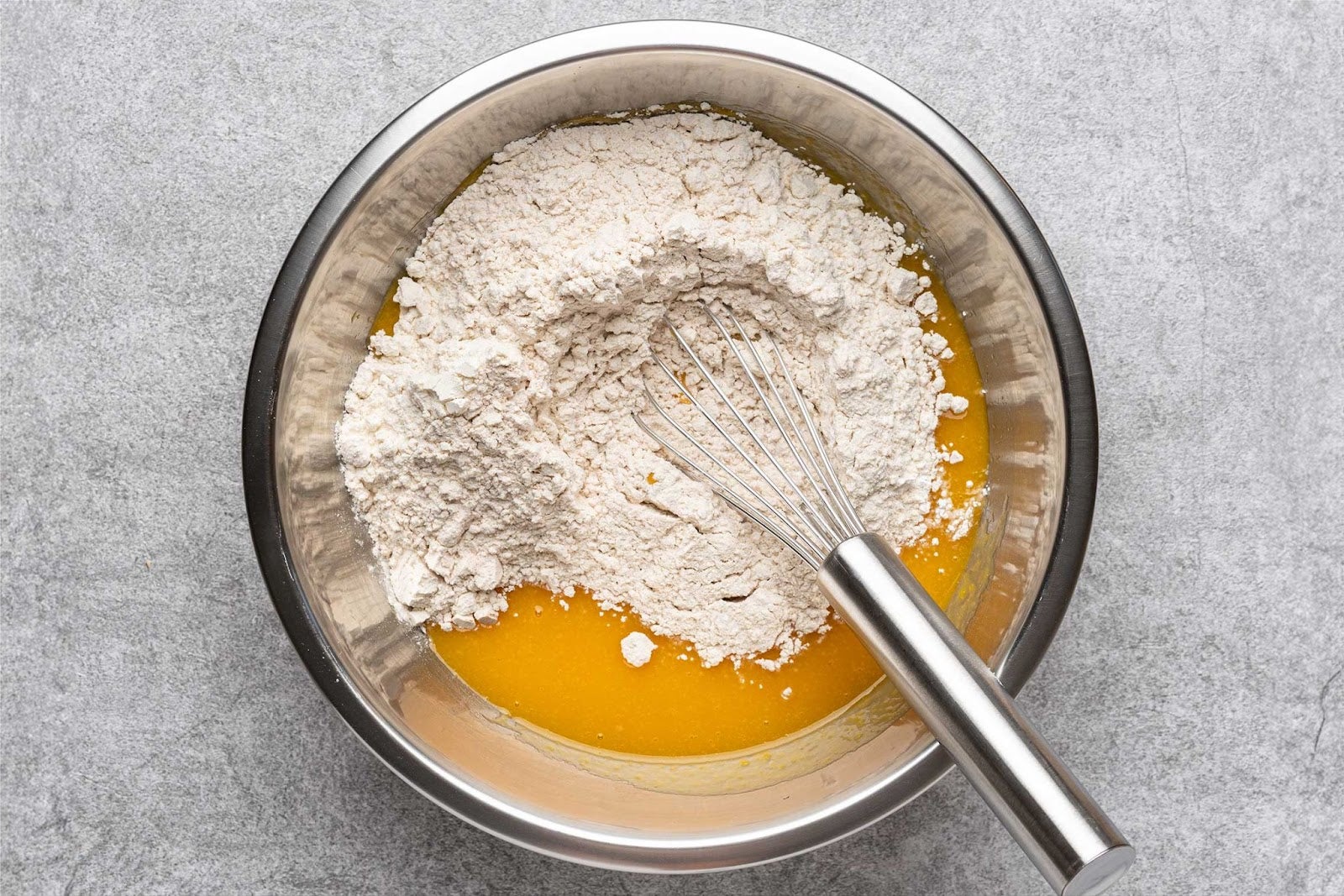It’s officially baking season, and in our ongoing quest to make your culinary endeavors more sustainable, we’re here to help you use what you’ve got instead of buying new ingredients you may only need once. Food waste runs rampant around the holidays; in fact, Americans tossed 305 million pounds of grub last Thanksgiving. Reducing that total is a powerful way to counter the climate crisis.
We’ve compiled a list of at-the-ready swaps for 11 common baking ingredients. So when the apple pie recipe calls for a tablespoon of cornstarch, the cranberry-orange quick bread uses something other than all-purpose flour, or you run out of eggs at the last second, you’ll know what to reach for instead of dashing to the store.
Baking powder
What to sub: Per teaspoon of baking powder, use ¼ teaspoon baking soda plus ½ teaspoon cream of tartar, lemon juice, or vinegar.
Why it works: Baking powder is baking soda (sodium bicarbonate) mixed with an acid. When sodium bicarbonate is heated, it releases CO2, which makes baked goods rise; it also creates sodium carbonate, which tastes bad. Acid neutralizes it.
Baking soda
What to sub: Baking powder, at a 3:1 ratio (e.g., 3 tablespoons of powder per 1 of soda).
Why it works: Baking soda is the more powerful leavening agent, which is why you need more powder to achieve the same rise. Because baking powder contains acid (and you’re using a lot of it) you may taste it in the finished product.
Brown sugar
What to sub: Granulated sugar plus molasses (or maple syrup). Mix a scant cup of granulated sugar and 1 tablespoon molasses for light brown sugar and 2 tablespoons for dark brown sugar.
Why it works: Brown sugar is regular sugar combined with molasses, so mixing everyday granules with something dark, sticky, and sweet is a spot-on mimic.
Buttermilk
What to sub: Milk (cow, soy, or oat) plus acid. Mix 1 cup minus 1 tablespoon milk with 1 tablespoon lemon juice or vinegar, and let stand for 10 minutes.
Why it works: Commercial buttermilk gets its tartness via fermentation with bacterial cultures; the flavor can be replicated to some degree by mixing milk with acid.
Cake flour
The content below was originally paywalled.
What to sub: All-purpose flour plus cornstarch or arrowroot. Per cup of cake flour, sub 1 cup minus 2 tablespoons AP plus 2 tablespoons cornstarch or arrowroot powder.
Why it works: Cake flour has less protein than AP, which is what makes sponges light and airy; cutting AP flour with cornstarch ratchets down the protein.
Cornstarch
What to sub: Arrowroot powder (1:1), potato starch (1:1), rice flour (2:1), tapioca powder (2:1), or all-purpose flour (2:1).
Why it works: Each of these acts as a thickener when mixed with liquid, and as a binder when tossed with fruit for pie filling.
Cream
What to sub: Canned coconut cream; evaporated milk; or ¼ cup melted and cooled butter (plant-based, if you’ve got it) plus ¾ cup whole milk or coconut milk.
Why it works: Evaporated milk or butter-plus-milk both act like cream when cooked—alas, neither one will whip. With 20% fat, coconut cream whips up nicely and adds velvety richness.
Eggs, whole
What to sub: For 1 large egg: ¼ cup sparkling water; or 2 teaspoons baking soda, 1 teaspoon vegetable oil, and 2 tablespoons water.
Why it works: Carbonated water adds moisture while gas bubbles act as a leavener. The baking soda formula works similarly: sodium bicarbonate for lift; oil and water for moisture.
Egg whites
What to sub: 2 tablespoons of aquafaba per egg white.
Why it works: Aquafaba holds on to a lot of air when whipped, so it’s a great stand-in for whites in meringues, but suboptimal mixed into doughs and batters.
Powdered sugar
What to sub: Granulated sugar plus cornstarch. Add 1 tablespoon cornstarch per cup of sugar and blitz in the blender or food processor until powdery.
Why it works: The blender pulverizes granules, while the cornstarch prevents caking. When subbing, it’s good to go by weight, not volume, since powdered sugar is lighter than granulated.
Pumpkin pie spice
What to sub: Chinese five-spice powder or a combination of any or all of: cinnamon, ginger, allspice, clove, and nutmeg.
Why it works: Fall’s ubiquitous flavor was first sold commercially by McCormick in 1934, then as now a blend of cinnamon, ginger, allspice, and nutmeg. Other companies add clove to the mix, but any combination of these spices will add warm, autumnal notes to your pumpkin pie.

